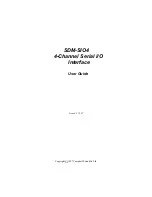
TST-020 PT-AIR
– REV. 2017-246
Page 5 of 14
If the vacuum level of
both
the lifter
and ball valve’s vacuum gauges start and continue to
drop: The check valve leaks and needs to be replaced
and
there is a leak located in either
the filter or control valve assembly.
First, replace the check valve then
proceed to step 5
.
5) If it is determined that a leak exists in either
the filter or control valve assembly: Remove
the ball valve from the hose and reinstall it so
that the vacuum gauge is now in the line
connected to the control valve.
6) Remove the hose that connects the control
valve to the vacuum filter and cap off the
fitting (
4A
). See
FIGURE 4
.
7) With the ball valve in the open position
(handle in-line with the valve), apply vacuum.
When a sufficient level of vacuum is reached,
close the ball valve (turn handle
perpendicular to the valve) and close the air
supply valve to the venturi pump.
8) Observ
e the ball valve’s vacuum gauge:
If the vacuum level of the ball valve’s
vacuum gauge starts and continues to
drop: The control valve assembly is the source of the leak.
Examine the hose connection to the control valve and the fittings for any indications of loose
connections, cracks or damage. If there is no visible damage, replace the control valve.
If the vacuum level of the ball valve’s vacuum gauge holds steady and does not drop: The
vacuum filter is the cause.
Proceed to step 9.
FIGURE 4
4A



































